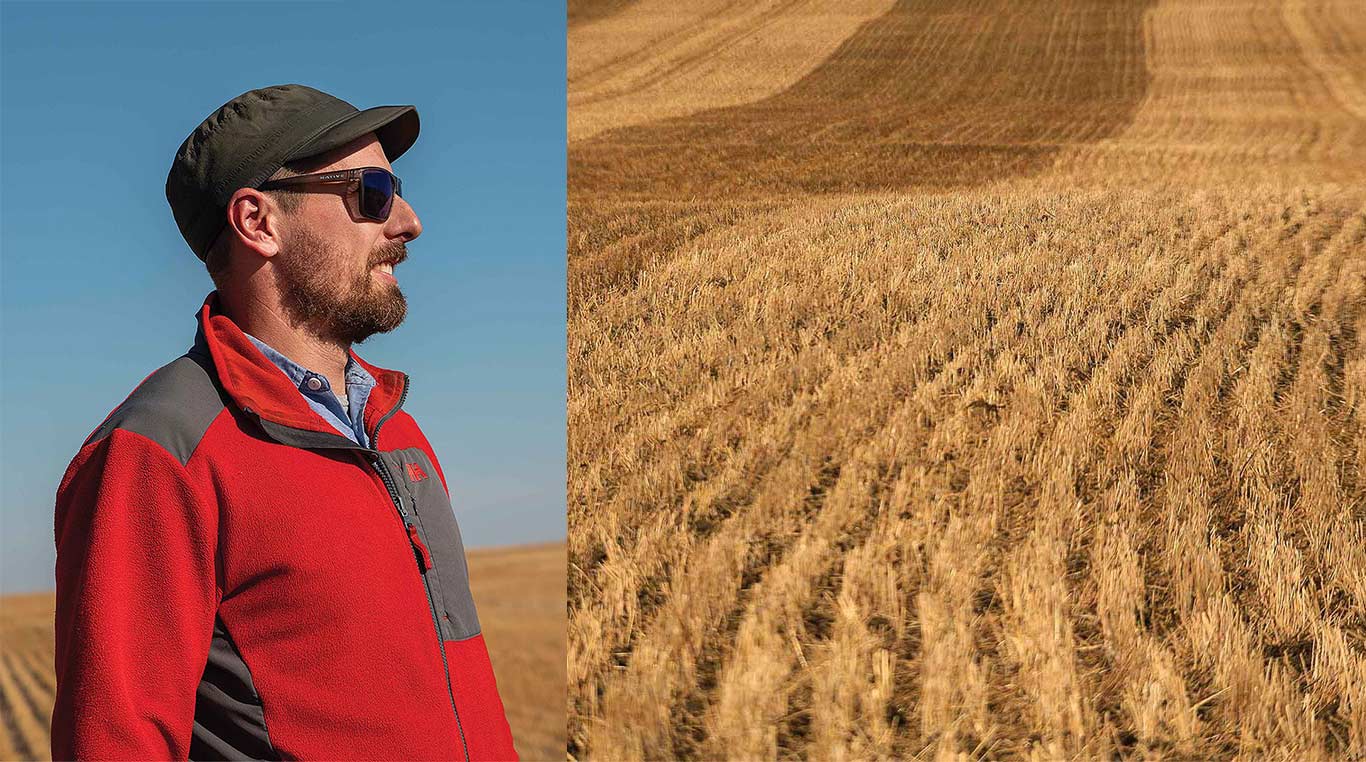Agriculture, Sustainability March 01, 2023
Accidental Mitigation
.
No-till adoption changed the prairie climate.
Who knew that no-till farmers on the Canadian Prairies and the U.S. Northern Plains have been reducing the impact of climate change for more than a quarter of a century? They certainly didn't!
Western Canadian farmers adopted no-till technology in the 1990s to save time, labor and fuel. Arguably the biggest advantage was that it conserved enough soil moisture to switch to continuous cropping. Summer fallow went from about 30 percent of all prairie acres in the early 80s to two percent today. It provides so many benefits that nearly all prairie farmers adopted it. An unintended consequence of this change is that it has also mitigated some aspects of the onset of climate change across the region.
"Different surfaces absorb, store, and emit energy at different rates," says Phillip Harder, a research associate at the Centre for Hydrology, at the University of Saskatchewan in Saskatoon. "Going from a 50/50 crop to bare land ratio to continuous crop over the entire prairies (and Northern Plains), changed its interaction with the atmosphere creating a completely different energy balance interaction. Instead of having half of our land surface, over one hundred thousand square kilometers, formerly being dry and hot it's now cropped and cooling the atmosphere if water is available, instead of heating it."

Above, left to right. Phillip Harder says the switch to no-till has mitigated some aspects of climate change on the prairies. The biggest advantage no-till has is that it conserves enough moisture to make continuous cropping possible. Summer fallow acreage dropped from about 30 percent of prairie cropland in the '80s to around two percent today. Transpiration from these extra acres of growing crops has offset climate change in the region in the summer months.
All land surfaces receive energy primarily in the form of solar radiation. But fallow land and growing vegetation partitions this energy differently, Harder says. A fallow field readily absorbs the incoming energy which heats up the soil and the air above it in turn. Cropped surfaces have a higher albedo (reflectivity) and absorb less energy to start with. Much of the energy they do absorb is used up in transpiration, the phase from liquid to vapor as water moves through the stomata of a leaf to the atmosphere.
"It takes a ton of energy to change the phase of water," Harder say. "So whatever energy that's used to convert water from a liquid into a gas is unavailable to warm up the air. A transpiring crop is using a huge amount of energy; the more water that's available in the root system the more energy can be used to transpire. This decreases air temperatures and increases humidity. It's the same evaporative cooling principle our bodies use; when we get hot, we get sweaty and cool off."
On the Canadian Prairies and the Northern Plains, transpiration in cropped land is highly focused during the peak growth months of June and July, the two warmest months of the growing season. The evaporative cooling effect has been great enough to offset some of the increased daytime temperature peaks that were expected with climate change in the summer months.
"It shows up in the weather data, but it's really hard to spot due to the region's highly variable climate," says Harder. "Winter and shoulder season temperatures are increasing, but the prairie summers have seen relatively smaller temperature changes and are more humid. Temperatures aren't rising as much in the summer as they are in other parts of the year. They're increasing, just not by as much as expected."
No-till and continuous cropping have increased crop production and had a positive impact on both farmers' finances and on climate change. But climate change hasn't stopped and conversion to no-till is nearly complete. There are few acres left to convert to offset higher summer temperatures in the future.
"In other words, we've been driving with one foot on the brake (reducing summer fallow) and the other foot on the gas (climate change) and we just burnt through the last of the brake's pads and the fuel tank is still full," Harder says. "There are other ways we can further mitigate changes by managing land-atmosphere dynamics, but they aren't as easy. We need to find ways to further increase and concentrate crop water use to summer months, and on the water-limited prairies, that's easier said than done." ‡
Read More

LIVESTOCK/POULTRY, AGRICULTURE
Under the Midnight Sun
Commercial egg production in the Yukon isn't for the faint of heart.

AGRICULTURE, RURAL LIVING
Rootbound Farm Grows Deep Organic Roots
Committed to taking local eating beyond corn and tomato season.

